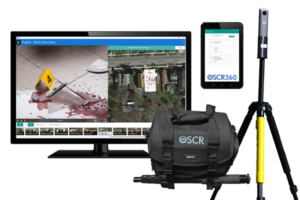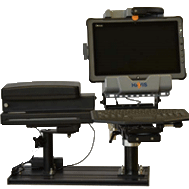During this ‘age of tech,’ what technology has affected the criminal justice system?
Few aspects of life in the 21st century remain untouched by technology. Among the slowest to adapt, adopt, or innovate technology, is the criminal justice system. You’d think that would be the one we’d want to be the fastest. Instead, as a result of waiting to adopt new technology, agencies risk falling behind – to the point criminals are often ‘higher tech’ than the agencies charged with catching them, and the judges dispensing justice.
Blame the turtle pace on “it’s government,” but also take into account caution is always well-advised when people’s rights and freedoms are concerned. Throw in morphing societal norms, challenges to established concepts of justice, legislation, case law, U.S. Supreme Court decisions – it’s a wonder the wheels of justice turn at all.
What technology has affected the criminal justice system? This technology is so broad, narrowing it down to just a partial list boggles the mind:
On the street
- Body cams
- Rapid identification systems
- License plate readers
- E-citation license readers
- Facial recognition programs
- Heads-up vehicle displays
- Holographic sights
- Night vision technology
At crime scenes
- 3-D scanners
- Spherical cameras
- Phone-based measurement apps
Back at the office
- Photo evidence storage
- Evidence inventory barcode software
- Case evidence presentation software
- Streaming surveillance cameras
In the courtroom
- Monitors
- Presentation software
- In-court evidence cameras
In the air
- Drones
- High resolution digital cameras
- Thermal and infrared imaging
- Electro-optical imaging
- Hyperspectral imaging
- Real-time video transmission
Inside training
- Virtual Reality
- Augmented Reality
- Holographic headsets
Within crime labs / morgues
- Digital X-Ray, CT
- Portable scanners
Inside jails and prisons
- Full body scanners
- Biometric software – retinal scans, iris scans
- Palm print / fingerprint scanners
Even a seemingly simple, established concept like photography was challenged at its earliest introductions into criminal justice in the mid-1800s. But, what imaging has on its side is a human condition: “Seeing is believing.” Since then, the consumer’s pressing desire for cheaper, smaller, lighter, higher quality imaging technology has led to such things as live streaming from a cell phone and the programming of miniature drones.
So what continues to be the holdup?
Beyond the social and legal challenges emerging technology typically endures, the cost-benefit analysis every criminal justice agency must undergo inevitably delays implementation. Some agencies simply wait for the eventual price drop which comes as new tech ages. Others just go without.
It’s not just hardware and software costs. What often discourages police and jurists from jumping on cutting-edge technology ARE the above-mentioned legal challenges. No agency wants to risk its reputation AND take on the financial costs that accompany an overturned court case.
With the decision to invest in technology also comes training, maintenance, upgrades, and administrative costs. When the Department of Defense made surplus military equipment available to law enforcement, agencies had opportunities to acquire “big ticket” items like armored vehicles and aircraft. It was the ancillary costs – parts, maintenance, personnel, training, regulations – essentially staying current, which prevented many police departments from adding such capabilities.
Examination of an agency’s return on investment (ROI) should not only include cost assessment, but potential savings, particularly in time and labor (aka personnel costs).
Tech manufacturers and solutions providers typically stand behind what they develop, build, promote, and sell. If they don’t, you need to shop elsewhere. Working with a tech solutions company during the demo, evaluation, purchase, training, and implementation processes minimizes and frequently eliminates legal chances ahead of time. The criminal justice system, and government in general, have legal resources at hand, and if brought into the process, can help evaluate the early use of emerging technology. In fact, when e-Citation technology was first introduced to law enforcement, early versions of what is now L-Tron’s 4910LR license reader went through rigorous testing – by police officers – leading to today’s “purpose built” product development philosophy. This technology is tried and true – just ask one of the thousands of agencies across all 50 states.
The ubiquitous nature of visual media in our everyday lives has led not only to the development and accessibility of better technology, but to demands and expectations for its use both in the field and the courtroom. In fact, as our judicial system continues to evolve, “digital natives” who grew up with technology will dominate, influencing the ways future laws are enforced, crime scenes are documented, suspects are processed, and cases are presented in court. They will eventually make up all the police officers, jailers, prosecutors, defense attorneys, judges, and jurors. In short, they will be the decision makers.
As a result, expect development, utilization, and acceptance of technology in the criminal justice system to accelerate at an exponentially faster digital pace from which we can all benefit. One possible solution to overcoming the financial burden that accompanies new technology is bringing multiple agencies together to pool resources.
Chat with us to learn more about what technology has affected the criminal justice system. Share with us the technology that has affected your department and where you see police technology moving in the future via @LTronCorp & @LTronteam



